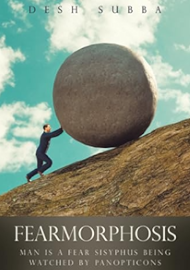A popular idea is that someone having a certain favorite color or colors shows that they have a certain personality or preference. This sometimes includes their least favorites. So, they are sometimes judged based on that.
But consider that blue (various shades) is by far the world’s most favorite colour. It is an overall favorite of men & women, boys & girls, young & old, rich & poor, intelligent & dumb, white & black, gay & straight, Christian & Atheist, conservative & liberal, tall & short, fat & thin, and those living on every continent, having wildly different likes and dislikes. Also consider that orange and brown are the overall least favorite among every group I mentioned.
Now what causes us to see in color? That would be the type of photoreceptor cells called cones within the eye’s retina. Most humans have three cone types: S, M, and L, or trichromacy. The number of cones and cone type percentages in each person varies a great deal. This is undoubtedly the main reason for palette preferences and dislikes.
That women on average have a greater interest in colour than men can be explained by most women having more cones of each type than most men. Some even have tetrachromacy: possessing a fourth type, while colorblindness among men is far more common, along with having dichromacy (only two cone types). Complete colorblindness or monochromacy is exceedingly rare.
These facts, taken together, should refute this belief that you can know something about someone based on their subjective color preference/s. That counterproductive notion, which amounts to unfair judgmentalism, should be dismissed as readily as the ideas of palm reading or reading tea leaves.
Another idea is that the use of various colours always symbolizes specific things. So, assumptions are sometimes made about their use. For example, the idea that pronounced use of red clearly indicates Communism, although those who so use it may be anti-Communist and oppose it completely. Or the idea that to diffuse a bomb, always cut the red wire, which is utter nonsense.
Though use or neglect of various colorants often does symbolize something, every single color can mean absolutely anything you want it to mean or nothing at all. The significance in their use can only be known if their user said what they stand for.
In conjunction with this, a so-called ecological valence theory might help explain why people use different colors. That is, perhaps hue preference is somewhat determined by the average affective response to everything an individual associates with the color. Hence, uplifting emotional experience with things of a particular pigmentation likely increase the propensity to prefer or use that colour. Bad emotional experiences would do the opposite.
So, to get a complete understanding of why anyone would use or neglect any tint or shade, or for that matter, prefer or neglect any words, images, mannerisms, customs, styles, or whatnot, you would have to know that person exceptionally well, which would take years.
Please keep in mind what I’ve said. Most importantly, I give all thanks to our God, the Father of lights (James 1:17), which photons allow us to see an entire spectrum of colors, each one of which possesses its own unique beauty.
*****My posts organized according to subject=
https://wordpress.com/settings/taxonomies/category/kcsunbeam.wordpress.com







